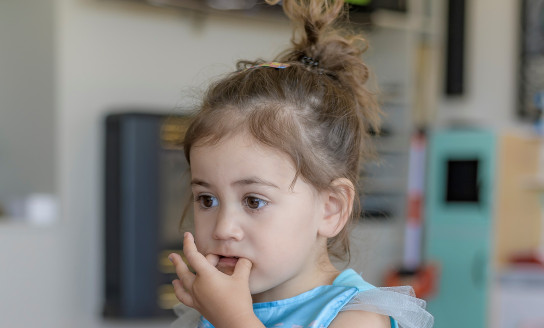Choking vs gagging
Babies sometimes gag as they learn to regulate the amount of milk or solid food they can swallow and/or chew at one time, but there’s a big difference between gagging and choking.
The gag reflex automatically closes off the throat and pushes the tongue to the front of the mouth. Similar to the swallow, cough and sneeze reflexes, it’s one we have our entire lives. If your baby gags, it’s a temporary situation, and it’ll resolve itself quickly.
Choking happens when the airway becomes blocked and prevents breathing. Normally, if your baby chokes, they’ll start to cough to try and move the blockage. Soft foods are easier to bring back up into the mouth, but if harder foods or other objects they’ve put in their mouths become lodged in the throat, they might need help to dislodge them.
Foods that can cause choking
Children can choke on food at any age, but those under five are at higher risk – and especially children under three.
The texture or shape of some foods makes them more likely to cause choking. Here are the foods more commonly associated with choking incidents, along with ways you can reduce the choking risk.
| Food | Risk | Reduce the risk |
| Small hard foods like nuts, large seeds, popcorn husks, raw carrot, apple, and celery that are hard for kids to bite or chew. | These foods are difficult for children to bite through and break down enough to swallow safely – pieces can become stuck in the airway. | Avoid giving small hard foods to children under five years old. Carrot, apple and celery can either be cooked until soft, or finely grated, until your child has developed better chewing and grinding abilities. |
| Small round foods like grapes, berries, raisins, sultanas, peas, watermelon seeds, lollies. | Foods like this can get stuck in children’s airways. | Avoid giving small round foods until children are at least five years old. Grapes, berries and cherry tomatoes can be cut into smaller pieces. Peas can be squashed with a fork. Avoid giving small round hard, chewy or sticky lollies/sweets to children under three years old. |
| Foods with skins or leaves, like sausages, chicken, lettuce and other raw salad leaves, tomatoes, and stone fruit like nectarines. | Food skins and leaves are hard to chew and can completely seal children’s airways. | Remove or peel skins before serving and cut into small pieces. You can finely chop salad leaves and cook spinach and cabbage until soft and then chop finely. |
| Compressible foods like hot dogs, sausages, pieces of cooked meat or marshmallows. | These foods can squash into the shape of a child’s throat and get stuck there. | You can cut these foods into small pieces, remove skins before serving, and cook meat until it’s very tender. Marshmallows shouldn't be given to children under five. |
| Thick pastes like peanut butter or chocolate spreads. | Foods like this can stick to the sides of a child’s airway. | Spread thick pastes very thinly and evenly onto bread. |
| Stringy or fibrous foods like celery, rhubarb and raw pineapple. | The fibres in these foods can make it hard for children to break the food up into smaller pieces to chew. | You can remove the high-risk parts of the food by peeling off the skin, removing the strong fibres, or slicing these foods thinly across the grain of the fibres. |
What to do if your child is choking
Even if you’re really careful children might still choke, so it’s important you know what to do as a parent, teacher, childcare provider, or caregiver.
It’s well worth going to a first aid class and learning cardiopulmonary resuscitation (CPR) and choking first aid for children.
Our free online CPR course is a great start.
